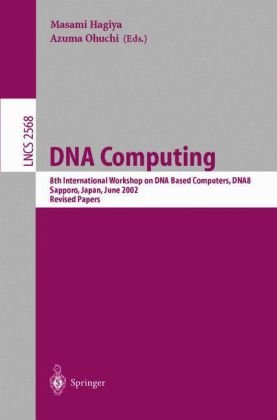

Most ebook files are in PDF format, so you can easily read them using various software such as Foxit Reader or directly on the Google Chrome browser.
Some ebook files are released by publishers in other formats such as .awz, .mobi, .epub, .fb2, etc. You may need to install specific software to read these formats on mobile/PC, such as Calibre.
Please read the tutorial at this link: https://ebookbell.com/faq
We offer FREE conversion to the popular formats you request; however, this may take some time. Therefore, right after payment, please email us, and we will try to provide the service as quickly as possible.
For some exceptional file formats or broken links (if any), please refrain from opening any disputes. Instead, email us first, and we will try to assist within a maximum of 6 hours.
EbookBell Team

4.3
98 reviewsBiomolecular computing has emerged as an interdisciplinary ?eld that draws - gether chemistry, computer science, mathematics, molecular biology, and physics. Our knowledge on DNA nanotechnology and biomolecular computing increases exponentially with every passing year. The international meeting on DNA Based Computers has been a forum where scientists with di?erent backgrounds, yet sharing a common interest in biomolecular computing, meet and present their latest results. Continuing this tradition, the 8th International Meeting on DNA Based Computers (DNA8) focuses on the current theoretical and experimental results with the greatest impact. Papers and poster presentations were sought in all areas that relate to b- molecular computing, including (but not restricted to): algorithms and appli- tions, analysis of laboratory techniques/theoretical models, computational p- cesses in vitro and in vivo, DNA-computing-based biotechnological applications, DNA devices, error evaluation and correction, in vitro evolution, models of biomolecular computing (using DNA and/or other molecules), molecular - sign, nucleic acid chemistry, and simulation tools. Papers and posters with new experimental results were particularly encouraged. Authors who wished their work to be considered for either oral or poster presentation were asked to select from one of two submission “tracks”: – Track A - Full Paper – Track B - One-Page Abstract For authors with late-breaking results, or who were submitting their manuscript to a scienti?c journal, a one-page abstract, rather than a full paper, could be submitted in Track B. Authors could (optionally) include a preprint of their full paper, for consideration only by the program committee.